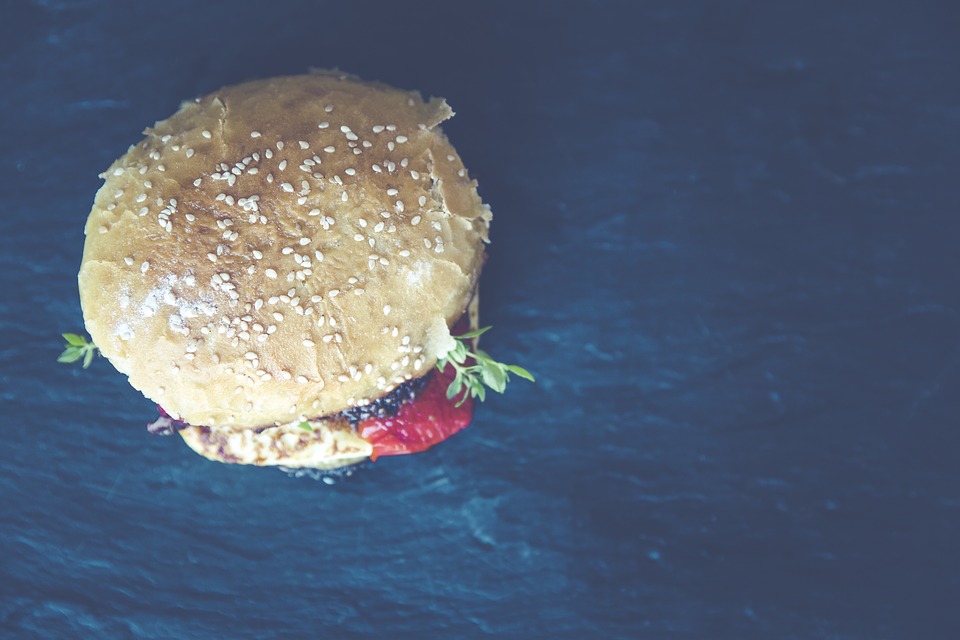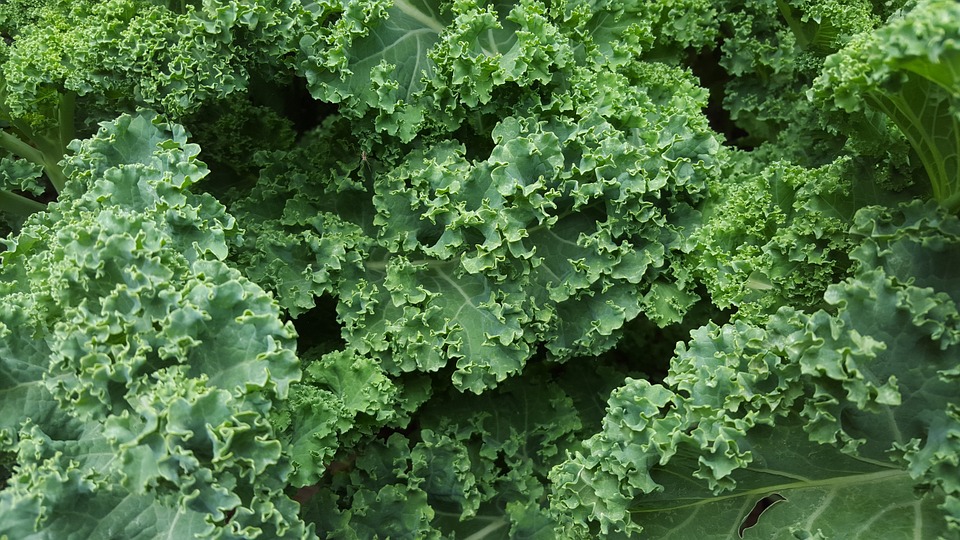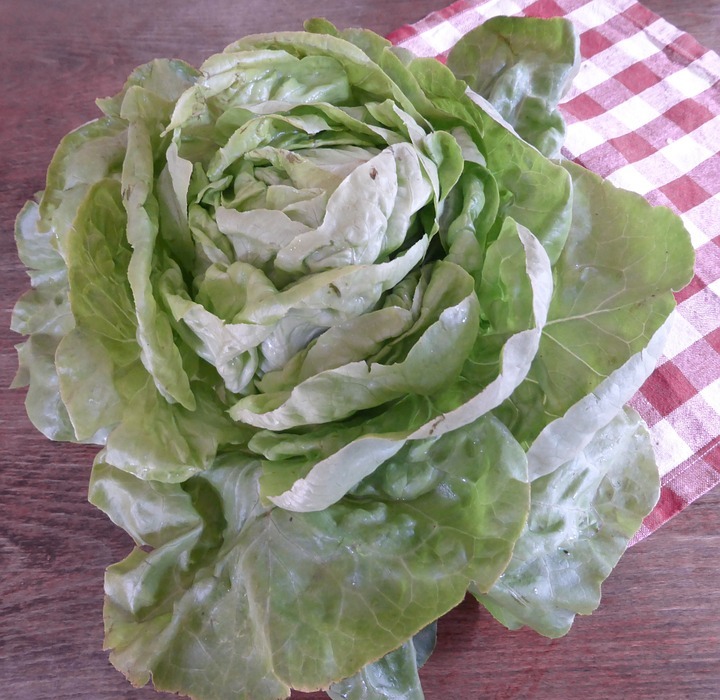As a dog owner, I'm always looking for ways to make my furry friend happy. Sharing my food seemed like a great way to show him some love, and what's more shareable than a delicious salad? But then the thought hit me: "Can dogs actually eat lettuce?" I'd heard conflicting stories, so I decided to delve into the world of canine lettuce consumption to get to the bottom of this leafy green dilemma. This article will take you on a journey to uncover the truth about dogs and lettuce. We'll explore the potential benefits and risks, and ultimately determine whether it's a good idea to let your dog munch on your salad. Let's get started!
(Part 1) Lettuce: A Leafy Green Dive

Before we jump into the "can dogs eat lettuce" question, let's first understand what lettuce is and what makes it tick. It's a leafy green vegetable from the daisy family, known for its crunchy texture and refreshing taste. But beyond that, lettuce boasts a surprisingly impressive nutritional profile.
Lettuce: The Nutritional Powerhouse
Let's talk about the good stuff. Lettuce is a good source of fiber, which is crucial for keeping your dog's digestive system in tip-top shape. It's also low in calories and fat, making it a decent snack option if you're trying to keep your pup's waistline in check. And some types of lettuce, like romaine, are packed with antioxidants, which help protect cells from damage.
Lettuce: The Potential Pitfalls
While lettuce is generally considered safe for dogs, there are some potential downsides to be aware of. Firstly, some dogs may be allergic to lettuce, leading to digestive upset, skin rashes, or even respiratory problems. This is particularly true for dogs with a history of food allergies.
Secondly, lettuce contains nitrates, which can be harmful to dogs in large quantities. These nitrates are naturally occurring compounds found in plants, and while they're not inherently bad, too much can cause problems. The risk of nitrate poisoning from lettuce is relatively low, especially if you're only giving your dog a small amount.
Finally, lettuce is also high in oxalates. Oxalates are naturally occurring compounds that can bind to calcium in the body, potentially leading to kidney stones. This is especially important for dogs with a history of kidney problems.
(Part 2) Can Dogs Eat Lettuce? The Verdict

So, the burning question: can dogs eat lettuce? The short answer is yes, but it's not as simple as that. While it's generally safe for dogs to consume lettuce in moderation, it's not something they need or should eat regularly.
Let me share a personal anecdote. I once gave my dog a small piece of lettuce from my salad, and he seemed to enjoy it. He wasn't over-the-moon about it, but he definitely didn't turn his nose up. He especially loved the crunch of romaine lettuce, and would even nudge me with his nose if he saw me munching on a salad. It's adorable, but it's crucial to remember that just because he likes it, doesn't mean it's the best thing for him.
The key takeaway is moderation. A small piece of lettuce as an occasional treat won't hurt your dog, but don't make it a regular part of their diet.
(Part 3) Lettuce Varieties: The Best and Worst Choices

Not all lettuce is created equal. Some varieties are more suitable for dogs than others, so choosing wisely is essential.
Best Lettuce Choices for Dogs
Here are some of the best types of lettuce for dogs, based on their nutritional content and potential risks:
- Romaine Lettuce: Romaine is a good option due to its higher vitamin content and lower oxalate levels compared to other types. It's also a good source of fiber, which is beneficial for digestion.
- Butter Lettuce: This type of lettuce is soft and delicate, making it easier for dogs to digest. It's also low in oxalates, reducing the risk of kidney stone formation.
- Bibb Lettuce: Bibb lettuce is similar to butter lettuce in terms of texture and oxalate content, making it another good choice for canine consumption.
Worst Lettuce Choices for Dogs
While most lettuce is relatively safe for dogs, there are a few types you should avoid altogether:
- Iceberg Lettuce: Iceberg lettuce is known for its high water content, but it's also relatively low in nutrients and can be difficult for dogs to digest. It can also contain higher amounts of nitrates than other types of lettuce, increasing the risk of nitrate toxicity.
- Red Leaf Lettuce: Red leaf lettuce contains more oxalates than other types of lettuce, making it a less desirable choice for dogs, especially those with a history of kidney problems.
I know it's tempting to share your whole salad with your furry friend, but it's important to remember that lettuce, while generally safe, is not a necessary part of your dog's diet. They can get all the nutrients they need from their regular dog food.
(Part 4) How to Feed Your Dog Lettuce Safely
If you do decide to give your dog a piece of lettuce, it's important to do it safely.
- Wash the lettuce thoroughly. Lettuce is often grown in fields and may be exposed to pesticides and bacteria. Washing it thoroughly will help remove any harmful contaminants.
- Remove the stem. The stem of lettuce can be tough and difficult for dogs to digest. Make sure to remove it before giving any lettuce to your dog.
- Start with a small amount. If you're introducing lettuce to your dog for the first time, start with a small piece to see how they react. If they show any signs of digestive upset, stop giving them lettuce.
- Don't give your dog too much. Remember, lettuce is not a necessary part of your dog's diet. A small piece as an occasional treat is fine, but don't overdo it.
- Avoid lettuce with dressing or toppings. Dressings and toppings are often high in fat, salt, and other ingredients that can be harmful to dogs.
It's also worth noting that some dogs may be more sensitive to lettuce than others. If you have a dog with a sensitive stomach, it's best to avoid lettuce altogether. If you're unsure, it's always a good idea to consult with your veterinarian.
(Part 5) Lettuce and Your Dog's Digestive System
Let's dive into the impact of lettuce on your dog's digestive system. While most dogs can tolerate small amounts of lettuce without any problems, it's crucial to be mindful of potential issues.
Benefits of Lettuce for Dog Digestion
Lettuce is a good source of fiber, which can help keep your dog's digestive system running smoothly. Fiber adds bulk to the stool, making it easier for the body to eliminate waste.
Potential Problems with Lettuce and Digestion
However, lettuce can also cause digestive upset in some dogs. This is more likely to happen if your dog eats too much lettuce, or if they have a sensitive stomach. Some signs of digestive upset include:
- Diarrhea
- Vomiting
- Gas
- Bloating
- Constipation
If your dog experiences any of these symptoms after eating lettuce, stop giving them lettuce and consult with your veterinarian.
I've personally seen the effects of a little too much lettuce. I once gave my dog a few extra pieces of romaine, and he ended up with a bit of an upset stomach. Thankfully, it cleared up within a day, but it was a good reminder that even something as seemingly innocuous as lettuce can cause problems if not given in moderation.
(Part 6) Lettuce and Your Dog's Overall Health
Beyond digestion, lettuce can also have other effects on your dog's overall health.
Potential Benefits of Lettuce for Dog Health
- Antioxidant Properties: Some types of lettuce, like romaine, are rich in antioxidants, which can help protect cells from damage. Antioxidants are thought to play a role in preventing chronic diseases, but more research is needed to confirm their benefits for dogs.
- Weight Management: Lettuce is low in calories and fat, making it a decent snack option if you're watching your pup's weight. It's important to remember that lettuce should be considered a treat, not a meal replacement.
Potential Risks of Lettuce for Dog Health
While lettuce offers some potential benefits, there are also some risks to consider.
- Allergies: Some dogs may be allergic to lettuce, leading to digestive upset, skin rashes, or even respiratory problems. This is especially true with dogs who have a history of food allergies.
- Nitrate Toxicity: Lettuce can contain nitrates, which can be harmful to dogs in large quantities. However, the risk of nitrate poisoning from lettuce is relatively low, especially if you're only giving your dog a small amount.
- Oxalates: Lettuce is also high in oxalates. Oxalates can bind to calcium in the body, potentially leading to kidney stones. This is especially important for dogs with a history of kidney problems.
It's important to be aware of these potential risks and to consult with your veterinarian if you have any concerns.
(Part 7) Alternatives to Lettuce for Your Dog
If you're looking for a healthy treat for your dog, there are plenty of alternatives to lettuce. Here are a few options:
- Carrots: Carrots are a good source of vitamins A and K, and they're also low in calories and fat. They can be given to dogs raw, cooked, or even as a snack.
- Green Beans: Green beans are another great option for dogs. They're a good source of fiber and vitamins A, C, and K. They can be given to dogs raw, steamed, or even frozen.
- Celery: Celery is a good source of vitamins A and C, and it's also low in calories and fat. It can be given to dogs raw or cooked. Just be sure to cut it into small pieces to avoid choking hazards.
- Apples: Apples are a good source of fiber and vitamins A and C. They can be given to dogs raw, cooked, or even as a snack. Just be sure to remove the core and seeds, as they can be toxic to dogs.
These are just a few ideas for healthy treats for your dog. It's important to talk to your veterinarian about what's best for your specific dog.
(Part 8) FAQs: Common Questions About Dogs and Lettuce
Here are some frequently asked questions about dogs and lettuce, along with my best answers:
1. Is lettuce poisonous to dogs?
Lettuce is not poisonous to dogs. However, it can be harmful in large quantities due to its nitrate and oxalate content. It's also important to be aware of potential allergies and digestive upset.
2. Can dogs eat lettuce with dressing?
It's not recommended to give dogs lettuce with dressing. Dressings are often high in fat, salt, and other ingredients that can be harmful to dogs. Stick to plain lettuce for a safer treat.
3. Can dogs eat lettuce with tomatoes?
While tomatoes are generally safe for dogs in small amounts, they contain solanine, a compound that can be toxic to dogs. Therefore, it's best to avoid giving dogs lettuce with tomatoes. A safer option is to stick with lettuce and a few dog-friendly vegetables like carrots or green beans.
4. Can dogs eat lettuce everyday?
While lettuce is generally safe for dogs in moderation, it's not something they need or should eat regularly. A small piece of lettuce as an occasional treat is fine, but don't make it a regular part of their diet.
5. What if my dog eats a whole head of lettuce?
If your dog eats a whole head of lettuce, it's best to monitor them closely for any signs of digestive upset. If they show any signs of illness, it's important to contact your veterinarian immediately. They will be able to advise you on the best course of action.
(Part 9) Final Thoughts: Sharing Your Salad with Your Dog
So, what's the verdict? Can dogs eat lettuce? The answer is yes, but with some caveats. It's important to remember that lettuce is not a necessary part of your dog's diet. A small piece as an occasional treat is fine, but don't overdo it.
It's also important to choose the right type of lettuce, wash it thoroughly, and remove the stem. Be mindful of potential allergies and digestive issues, and always err on the side of caution.
Ultimately, whether or not you give your dog lettuce is a personal decision. I know I'll continue to share a little bit of my salad with my dog, but I'll always do it in moderation and keep an eye out for any signs of trouble. After all, a happy, healthy dog is a happy, healthy owner!
Everyone is watching
-

Can Dogs Eat Bananas? A Guide to Safe Treats
DOGS & PUPPIESThis comprehensive guide will delve into the world of canine nutrition, focusing on the popular question: can ...
-

Can Dogs Eat Oranges? (Is It Safe or Toxic?)
DOGS & PUPPIESThis article delves into the question of whether dogs can safely consume oranges. We'll explore the nutrition...
-

Can Dogs Eat Grapes? The Shocking Truth About This Fruit
DOGS & PUPPIESThis article delves into the controversial topic of grapes and dogs, exploring the potential dangers associate...
-

Why Do Dogs Eat Poop? Understanding Coprophagia in Dogs
DOGS & PUPPIESThis article delves into the perplexing phenomenon of coprophagia, the act of eating faeces, in dogs. We explo...
-

Can Dogs Eat Shrimp? A Guide to Safety and Risks
DOGS & PUPPIESThis comprehensive guide dives into the world of shrimp and dogs, exploring the potential benefits and risks a...
